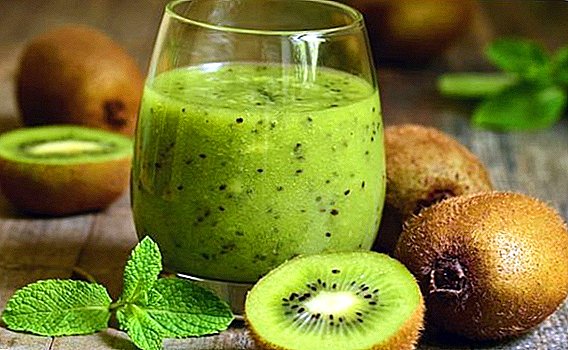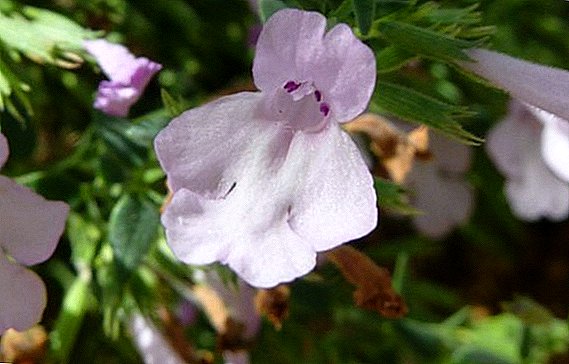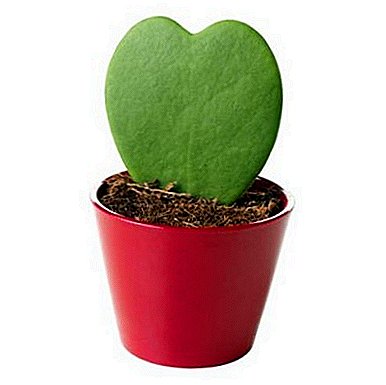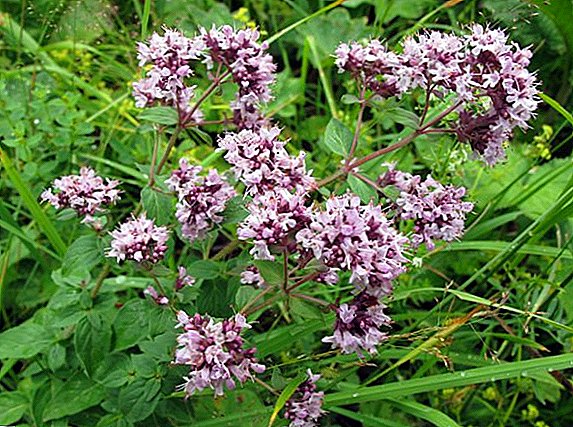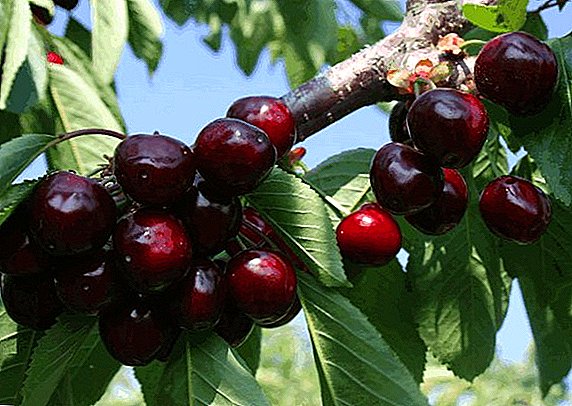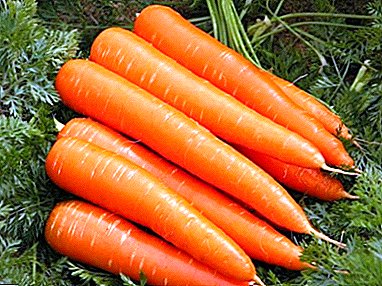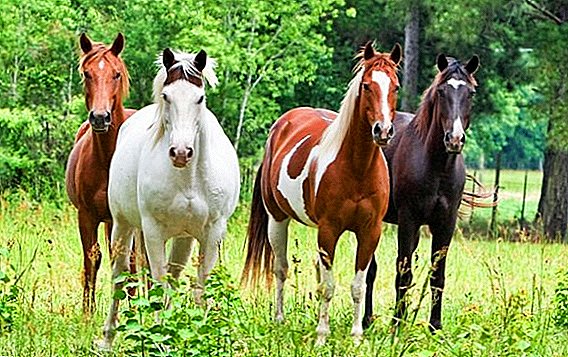 Despite technical progress, many farmers still breed horses for agricultural needs or hunting. A horse, like any other animal, requires proper attention from the owners, so today we will talk about how to properly care for horses and discuss various subtleties that will help you navigate a difficult situation.
Despite technical progress, many farmers still breed horses for agricultural needs or hunting. A horse, like any other animal, requires proper attention from the owners, so today we will talk about how to properly care for horses and discuss various subtleties that will help you navigate a difficult situation.
Proper horse maintenance
The conditions of keeping horses in the stable is by no means the last factor on which the horse’s health and its usefulness depend. To begin, we will discuss the parameters of the room, and then we will tell about the grazing of horses.
Horse stable
Exists 3 systems for keeping horses: stall, in a stall or group.
A horse-bed (a separate room) came to us from the USA, where horses were used to keeping them that way. The dog root is easier to clean and it is much more spacious. Horses feel more comfortable, as they can change position. However, with the wrong layout, the animal may be isolated (no bars or windows between the stalls). In this case, the horse will show apathy or aggression, refuse to eat and drink.

The stall is a cheaper option, but it is much more difficult to clean a room with a stall type of content. The unique advantage is that animals will not feel isolated, with such a system, free space and finances are saved.
Group keeping is used for working horses of the same age. In one section are collected from 20 to 100 horses, which can move freely inside the enclosed part of the room. This method is suitable for the maintenance of a large number of horses of low value.

The pasture hall is incredibly difficult to remove from faeces and residues of feed, so this type of content cannot be called optimal. The only advantage of such a room is the partial freedom of the animals: they can move inside the enclosure, develop limbs and play.
With regard to the maintenance of horses in the winter, the best option would be just a stash, since it has enough space and is easier to clean. In winter, it is impossible to air the room, so in the case of bacterial or viral disease, additional partitions between the sections will not allow the infection to spread beyond the "room".
It is also interesting to read about the horse breeds: Arab, Akhal-teke, Vladimir heavy truck.
Now for the size of the stable. The ceiling height should not be less than 3 m. The higher the ceilings, the better the ventilation, therefore it is necessary that the ceiling be at a height of 3.2-3.5 m. If you build a stall, then each horse must have at least 3.5 4 m².
Lighting. In the daytime in the stable should be light, which is provided by the presence of a sufficient number of windows. Lack of daylight affects not only the eyes, but also the general condition of the animal.

Ventilation. A prerequisite for any stable is good ventilation without drafts. Typically, windows are built for ventilation under the roof or at the top of the stable doors.
Paul stables. Depending on the availability of materials, the floor may be wooden, mud or concrete. It is more durable to use concrete, in which you can easily draw ditches to drain the desired length and diameter.
Now you know where the horses are kept., and what conditions should be kept in order for animals to feel comfortable.
Did you know? In 1993, there were 427 horse breeds all over the world, in the former USSR about a seventh of them were bred. For breeding breeding use only 18% of the horses of their total.
Stall
For economy of means and a place, horses in a stable keep in the stabling way. Despite the fact that such a system of maintenance does not imply the allocation of a large quadrature for one individual, you still need to follow the rules of "easel" content so that the animal can rest and have the necessary personal space.

The stall area must be at least 5 m². Depending on the size of the horse, varies the length and width of one place. The stall length for small working horses (150x156 cm) is 2.9 m, width - 160 cm. For larger horses (more than 150x156 cm) the stall length must be at least 3.1 m, width - 180 cm.
Troughs. The length of the feeders should correspond to the width of the stalls, depth - about 30 cm, with a height from the floor of 100-110 cm.
Important! Feeders, regardless of material, should have rounded edges to avoid injury to the animal.Drinking bowls can be both individual and in the form of a gutter that runs through the entire stable.

Caring for a horse also involves compliance with the rules of hygiene. On average, a horse feces about 10-12 times a day and releases about 7 liters of urine. Accordingly, if daily cleaning is not carried out, then pathogenic microorganisms will begin to multiply in the waste. Light horses will suffer from ammonia, which is contained in the urine and gets into the air during excretion.
For cleaning, you will need the following inventory: shovels, manure forks, steel shovel, tough broom and a wheelbarrow.
Clean the stable from the remnants of food and feces need every day. During the harvesting process, wet straw and manure are removed. Once a week it is necessary to carry out a full cleaning of the entire stable (with the replacement of the litter).
Important! During harvesting, a horse may become frightened or show aggression, therefore, it is necessary either to transfer it temporarily to another place, or to tie it to a support so that the animal cannot injure itself or you.
Grazing and walking (walking) animal
Horses, no matter where they are kept, should be able to get out into the fresh air and stretch their limbs, since no animal can stand constantly in one place and maintain good shape. 
You need to walk your horse as often as possible if you expect to use it for hunting or agricultural work. However, it is worth remembering that walking should be an exercise for the animal, and not a grueling test, so observe following rules:
- let the horse warm up after the stable before any work or riding;
- the animal must get used to the temperature, otherwise, like a person, it can catch a cold if it sweats a lot;
- horses cannot be taken outside if the temperature is below -20 ° C, and even more so to use them for hard work or to drive at a gallop;
- spend walking at least once every 2-3 weeks, otherwise the leg muscles will start to atrophy and the horse will not be able to withstand the "standard" load.
You can walk horses both independently and in the left. The animal is positively influenced by a slow, monotonous walk, which strengthens the musculoskeletal system, aerates the lungs, and calms the nervous system.
Any physical activity burns calories, and its absence can lead to excessive weight. Therefore, try to let your pets out into the fresh air as often as possible so that they retain their strength qualities and remain useful.
Feeding and watering horses
Appearance, mood, immunity, strength and endurance depend on the correct diet, therefore, in addition to proper keeping of animals, appropriate nutrition is required, which we will discuss in this section.

Feeding ration
The diet of feeding depends not only on the breed, but also on the use of the horse. To make it easier to calculate the average daily need, let's look at the units of measure of nutritional value of agricultural feed.
To assess the nutritional value and usefulness of the feed, a feed unit is used, which is equal to 1 kg of average dry seed oats or 1414 kcal.
The feed unit is used to calculate the daily need for a particular feed. Since the usefulness of each feed is different, referring to the feed unit, you can accurately calculate the rate.
Now we can talk about feeding horses. An adult workhorse per day needs to consume 1.8–2.7 feed units per 100 kg of weight in order to save weight and perform the work assigned to it. The young stock requires 2.2-2.8 cents, that is, for the same 100 kg of body weight.
Important! Mares require 20% more feed units during lactation than the average working horse.It’s not enough to know the required amount of daily energy, as you need to feed the horse with a variety of dry and green feeds, which include proteins, fats, carbohydrates, fiber and vitamins. Therefore, further talk about how to feed the horses.
Average daily diet of an adult horse weighing 450-500 kg:
- oats - 4.5-5 kg;
- hay - 11-12 kg;
- bran - 1 kg;
- carrots - 2-3 kg.

In the diet must be present fruits or vegetables, which are sources of vitamins and minerals. Carrots are the most "marketable" product, as it is well stored and cheap, and its utility is not inferior to many seasonal fruits and more expensive vegetables.
Important! Carrots contain large amounts of vitamin A, which is necessary to maintain the health of the animal.It is also worth remembering that each horse must have access to the briquette-lizun, consisting of table salt.
Having dealt with the diet, tell you how and when to feed the horse.
The daily rate of oats is divided into 3 equal parts and given in the morning, at lunch and in the evening. Hay is given more often, about 4-5 times. It is worth remembering that hay should be at least 40% of the total diet.
In case the horse is busy working all day, feeding is carried out every 2 hours. During short breaks, coarse feeds are fed, and during long or late work, the animal is given water and fed oats, vegetables, fruits, or concentrates.
Important! After feeding oats or concentrates, the animal needs a break for an hour.Now you know how to feed a horse. Using life experience, you can reduce or increase the rate of food, add any green food that the animal loves.
How to organize watering
 Caring for horses involves proper and timely watering, which not only satisfies the need for fluid, but also helps the horse's digestive system to digest dry food.
Caring for horses involves proper and timely watering, which not only satisfies the need for fluid, but also helps the horse's digestive system to digest dry food.
The animal needs to be given at least 60-80 liters of water per day (depending on the load and temperature).
Water should be given before each feed with oats or compound feeds. If a special drinking bowl is installed in the stable, then do not forget to change the water in it daily and top up with fresh water.
Important! In winter, the need for water increases, as dry food predominates in the diet.Watering is carried out before feeding, in the fresh air. If the animal refuses water, this is the reason for the examination for the presence of diseases.
Horse care tips
We dealt with the conditions of detention and diet. Next, you should specify the subtleties of individual care, which also affect the health and mood of the animal.
Cleaning and bathing
In addition to the standard cleaning in the stable, every pet needs to clean the wool and wash it in the shower to protect it from skin diseases and various infections. But how to wash a horse? For washing the usual laundry soap or special shampoo is used.
First, a detergent is applied to all wool, including the tail and mane. Then you can go with a brush to remove the gems and possible parasites. Rinse foam need room temperature water from a hose or watering can.
Important! It is necessary to thoroughly wash off all detergent, otherwise irritation or allergy to soap / shampoo may occur.

It is recommended to carry out water procedures at least 1 time per week. In winter, it is worth being careful, as the contrast between warm water and cold air can cause a cold.
As you know, it is necessary to clean the horse to maintain the aesthetic appearance and remove debris from the coat, so we will tell you how to do it properly.
Since ancient times, our ancestors have been breeding various animals: goats, sheep, gobies, rabbits.
The cleaning of the horse starts from the head, then goes to the shoulders, withers and limbs. While combing, stroke the horse's skin, trying to find any sores or parasites. This procedure will not only calm the animal, but also give you additional information about its health. Use for cleaning The following inventory:
- brush;
- soft bristled brush;
- long-hair brush or mane and tail comb;
- 2 sponges;
- cloth or any other rag.

Unlike bathing, cleaning can be done year-round. Try to be careful during the process, otherwise the horse will feel pain and will be afraid of such procedures or may injure you.
Shooting and care for hoofs
For a start, it is worthwhile to understand when it is necessary to shoe a horse.
- The animal is involved in working on solid ground.
- Horse used to carry goods
- Horse has any hoof disease
- To maintain shape and performance
Important! Shooting a horse should only be a specialist, because a wrongly nailed horseshoe can cripple your pet or make it impossible to walk. Therefore, you should not experiment or try your hand at this without having the proper experience and knowledge.
With a horseshoe horse figured out, now find out how to care for the hooves, with horseshoes and without them.
Every day you need to inspect the hooves, clean them from dirt or stones, and, if necessary, lubricate with special oils. Every 6 weeks from the hooves it is necessary to remove regrown dead tissue, so that there will be no landings.

It is advisable to teach the foal to feed the legs for inspection from an early age, otherwise in the future you will have to work a dose of tranquilizers with each thorough inspection or forging.
Do not forget about calling a veterinarian for a routine examination, since any disease associated with the legs is difficult to notice at an early stage, without having the necessary education or knowledge.
Did you know? They began to use horses in battles in Mesopotamia in the 3rd millennium BC. In the X century BC. there also appeared the first horsemen.
How to care for your teeth
As with hoofs, only a dentist can accurately determine the condition of the teeth and the presence of any problems. It is necessary to call him to check the condition of the oral cavity every six months - a year. The older the horse, the more often you need to call a veterinarian.
We list the characteristics that indicate problems with teeth:
- incontinence in the mouth;
- slow chewing or complete rejection of food;
- an animal bites or chews a bit;
- the back of the horse is very tense.

Veterinary treatments
Every animal, regardless of living conditions, breed and diet should be vaccinated against certain diseases.
Use these drugs to treat animals: Amprolium, Nitoks 200, Solikox, Gammatonic, Baytril, Enroksil, E-selenium.
1. Vaccination against anthrax. The procedure is performed annually and only by veterinarians. There is no free vaccine, so you can’t get the vaccine yourself.
2. Researches on SAP, INAN, a case disease. Held once a year, as this list refers to the most dangerous infectious diseases.
3. Vaccination against leptospirosis. Studies of the disease and the vaccination procedure are carried out as follows: once in 2 years, blood tests are performed in breeding farms; carry out an inspection before the export / import of animals; with suspected leptospirosis.
4. Vaccination against influenza. It is held once a year after the initial double or triple treatment. It is worth noting that there is a huge amount of vaccines against various strains of influenza viruses, so it’s better to contact a vet for help.

5. Vaccination against dermatophytosis. Animals are vaccinated once a year, in addition to the initial processing, which is carried out with an interval of 2 weeks. You must call a doctor to perform the procedure, otherwise you can get the wrong vaccine or inject it incorrectly.
6. Vaccination against rhinopneumonia. Depending on the region, vaccination against this disease may be mandatory or at the request of the owner. However, if you are planning to breed horses at home, then the procedure is mandatory. Rhinopneumonia is a common cause of miscarriages in late pregnancy.
7. Vaccination against tetanus. Если используется импортная вакцина, тогда проводить процедуру нужно раз в 2-3 года, если отечественная - раз в 3-5 лет. Вакцинация от этой болезни является обязательной, независимо от региона или условий содержания животных.
8. Вакцинация от бешенства. Не является обязательной, однако ее следует провести, во избежание массового мора животных. Especially important for farms that are located in the habitats of natural carriers of the disease.
Important! If your horse participates in competitions, then the check is carried out once every 6 months.
There are a number of vaccinations that are necessary for the destruction of various parasites that your pet can "catch" when in contact with pets, so when dealing with horses, you should definitely keep in touch with the vet.

All the rules outlined in this article are of equal importance when keeping horses. Take care of them, try to give the animal something tasty, take more often for a walk, and you will get a good friend with whom to have a good time.


